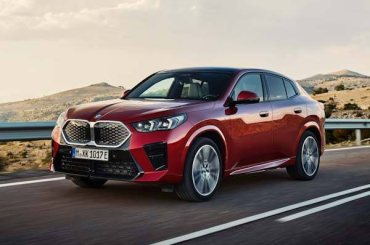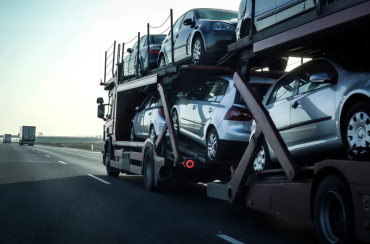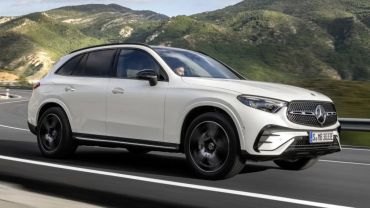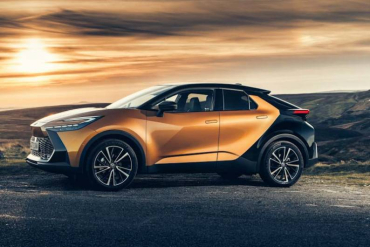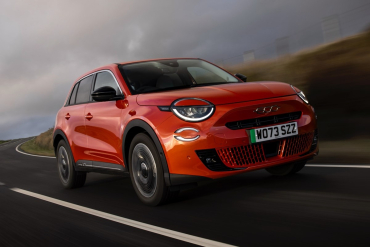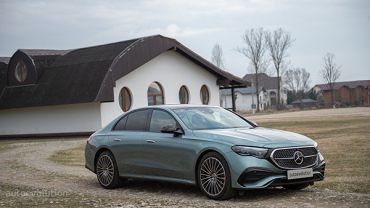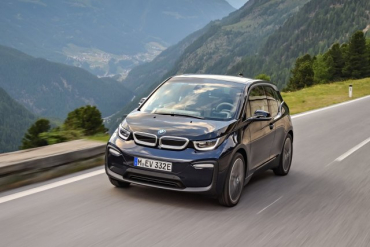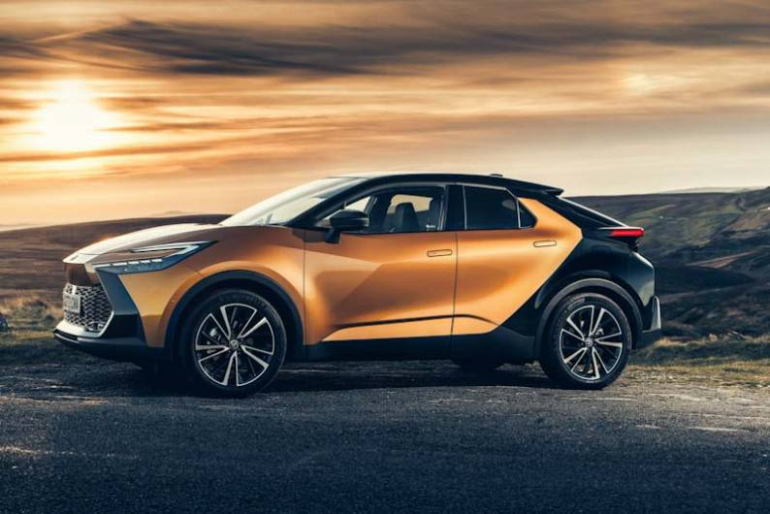
Worldcarblog.com
BMW iX2 review - Driving Experience, Design, Build and more...
Another BMW EV, this time a small, very trendy one, the iX2. Jonathan Crouch takes a look at what's on offer.
Ten Second Review
The market's first fully electric compact coupe crossover is this car, the iX2. It's basically an iX1 in drag of course, but there's a little more to the iX2 that that. It's sharper to drive and has a degree or two more of the personality missing from its EV showroom stablemate. So many small EVs today are disappointingly sterile in character. This one at least, is a little different.
Background
For most of the last decade, BMW's smallest full-electric offering was the innovative and charismatic little i3. For any who might have found its conventional-looking iX1 replacement in 2022 a touch on the dull side, the Munich maker has brought us this, the iX2.
As with the combustion-powered second generation X2, BMW's tried to do a little more here than simply provide a sleeker-looking version of the model that sired it, in this case the iX1. So we're promised sportier handling to go with the trendier Coupe-SUV visual vibe. The price here might be pushing up towards the kind of level that would get you a slightly larger lower mid-sized EV crossover. But the Bavarian brand hopes that this iX2's combination of looks, life and fashion might make you want one anyway.
Driving Experience
Initially, the iX2 is only being offered in top xDrive30 form, which has two electric motors, AWD and 313hp (62mph in 5.6s). Drive range is up to 266 miles, though to achieve that, you'd have to select the most frugal 'Efficient' MyMode drive setting and make full use of all the various provided energy recuperation settings. There are selectable high, medium or low braking energy recovery settings, or you can simply leave the system in its automatic adaptive setting. Do that and thanks to intelligent networking, the drive system can use navigation and driver assistance system data to adjust how much power is recuperated, according to the respective traffic situation.
As with the combustion X2, sharp Sport steering is standard, as is adaptive M Suspension with adjustable and frequency-selective dampers. The Bavarians have also included rear actuator wheel slip limitation to maximise agility, with a traction control system integrated into the engine management. This allows corrective inputs to be applied up to ten times faster than with conventional systems, benefiting traction, poise and handling stability. The suspension system's been designed with special axle kinematics and lift-related damping on the front axle. And there's a powerful integrated braking system with four-piston fixed-caliper front discs.
Design and Build
Visually, this iX2 isn't much differentiated from its combustion-powered X2 showroom stablemate. The front is dominated by an enormous pair of blanked-off kidney grilles which can be illuminated and are flanked by LED headlights that extend back into the flared front arches. In profile, the roof line slopes back dramatically, before being truncated by a blunt rear end. Striking? Certainly. Pretty? Not so much.
And inside? Well if you've tried the iX1, you'll know what to expect: a very avant garde cabin based around a curved glass fascia panel incorporating a 10.25-inch digital instrument display and a 10.7-inch central touchscreen. The iDrive software behind the set-up is BMW's 'Operating system 9' package, which gives you a new 'Quick Select' feature, allowing you to activate key functions without endless scrolling through sub-menus.
As with the ordinary X2, the rear bench is a little more spacious than you might expect and doesn't have that much less headroom than the iX1. Out back, there's a 525-litre boot, which is 10-litres more space than you'd get in an X2 sDrive20i and, interestingly, 35-litres more than you'd get in a supposedly boxier iX1. That extends to 1,400-litres with the rear seats down.
Market and Model
Pricing for this iX2 started from launch from just over £56,500 in xDrive30 AWD form. That's over £9,000 more than the combustion alternative, the X2 M35i xDrive. With the iX2, there's only one trim level - 'M Sport'. That's the one most customers would have chosen anyway because it provides the various visual cues this car needs to look in any way sporty. Specifically, this trim level includes large side air intakes integrated into the front apron, a body colour border along the lower edge of the body, M-specific side skirts, M High-gloss Shadowline exterior trim and a rear apron with integrated diffuser.
Adaptive M suspension and double-spoke 19-inch M light-alloy wheels are also part of the M Sport specification, together with sport seats, an Alcantara-covered instrument panel, an anthracite-coloured headliner and an M leather steering wheel with gearshift paddles. On the options list is the 'M Sport Pro' pack. Among the features this adds are M High-gloss Shadowline exterior trim with extended elements, M lights Shadowline exterior trim, an M rear spoiler, an M Sport braking system with red-painted callipers and M seat belts.
There's a comprehensive media package that includes 'Apple CarPlay' and 'Android Auto' wireless smartphone integration. And BMW ConnectedDrive upgrades keep the car up to date with the latest software, with upgrades ranging from new services to improved vehicle functions. Specify the 'Comfort Access' pack and you'll get the 'BMW Digital Key Plus' feature, which will allow you to lock or unlock your iX2 with your Apple iPhone. And you'll be able to share this functionality with up to five users using the 'My BMW app'.
Cost of Ownership
This iX2, as we told you in our 'Driving' section, can go up to 266 miles on a single charge. For that, you'll need to select the most frugal of the provided MyMode drive settings - 'Efficient'. And you'll also need to make full use of the brake recuperation energy you'll get while driving in the provided 'B' gear setting. Recuperation of up to 120kW can be generated via the brake pedal regardless of the driving mode. If you're rapidly running out of battery charge, you might want to engage the provided 'MAX RANGE' function, where drive power and top speed are carefully restricted and comfort functions scaled back, allowing range to be increased by up to 25%.
The iX2 can support single and three-phase AC charging up to 11kW, which allows the battery to be fully replenished from empty in 6.5 hours. As an option, you can increase charging capacity to 22kW, which allows the battery to be fully replenished from empty in just 3 hours 45 minutes. DC charging at up to 130kW makes it possible to boost the battery level from 10 to 80% in 29 minutes, or increase range by 75 miles in just 10 minutes.
Summary
We're starting to see small EVs that are more credibly sporting - and this iX2 is one of them. Obviously, like every full-battery crossover, it has to overcome a prodigious level of weight, but there's lots of advanced engineering here to mitigate against that. As a result, you might well find yourself having more fun at the wheel of this BMW than you might ever have expected to in a small EV.
Of course, you're going to need to like the way it looks: not everyone will. But the iX2 isn't intended to attract everyone, nor would it be as appealing if it was. Few people in your neighbourhood or company car park will have one. An EV you might want not just because it's an EV but because it's a BMW. In the truest sense.
Source: rac.co.uk
"It's time for Europe to respond to the threats posed by Chinese car brands"
"It's time for Europe to respond to the threats posed by Chinese car brands," said Renault Group CEO Luca de Meo, urging European Union countries to collaborate in addressing the imbalance in competition with China and the USA.
De Meo suggests that this approach would ensure the future of the automotive industry in Europe, similar to what was done in the case of the Airbus airline.
"We see increasing signs of weakness that could be cause for real concern if nothing is done," he stated in a public letter ahead of the European Parliament elections, as reported by Automotive News Europe.
De Meo, also the president of the European Automobile Manufacturers' Association (ACEA), published the letter in several languages as the leader of the Renault Group.
Among the proposals is for Europe to accelerate the pace of replacing older cars through a special fund over the next decade.
"The European automotive sector is under pressure from multiple fronts," he said, citing the transition to software-defined vehicles, increasing regulations, the need to invest in new technologies, price volatility of raw materials like lithium, and the need for workforce retraining to avoid mass unemployment.
"China rules, the USA stimulates, and Europe regulates," he wrote, emphasizing the longstanding issue of EU norms and regulations.
Among De Meo's proposals is support for the production of small, affordable cars, which he said could create 10,000 jobs.
"We see increasing signs of weakness that could be cause for real concern if nothing is done," De Meo wrote in the public letter, adding that "the center of gravity in the automotive industry has shifted to Asia, where about 52% of all cars sold in that region are produced, compared to 20% in Europe and 24% in North and South America."
As a consequence of Beijing's support for the electric car industry and the size of the Chinese domestic market, exports to Europe have increased fivefold since 2017, with the total trade deficit between Europe and China now standing at 400 billion euros.
2025 Mercedes-Benz GLC-Class gains PHEV model
Joining the recently redesigned regular Mercedes-Benz GLC-Class and its fastback counterpart will soon be a plug-in hybrid variant. The powertrain option has been absent since the compact luxury SUV was redesigned. Called the 2025 GLC 350e (like its predecessor), the new hybrid offers similar power, but likely much improved range.
The basics sound pretty familiar, with the GLC 350e combining a turbocharged 2.0-liter four-cylinder and an electric motor, with the latter making 134 horsepower and 325 pound-feet of torque on its own. Combined output is also similar at 313 horsepower (down just 2 from before), but significantly less combined torque at 406 pound-feet (from 516). That its 0-60 mph time is now 6.6 seconds rather than 5.6 may be related to that change. All-wheel drive is standard.
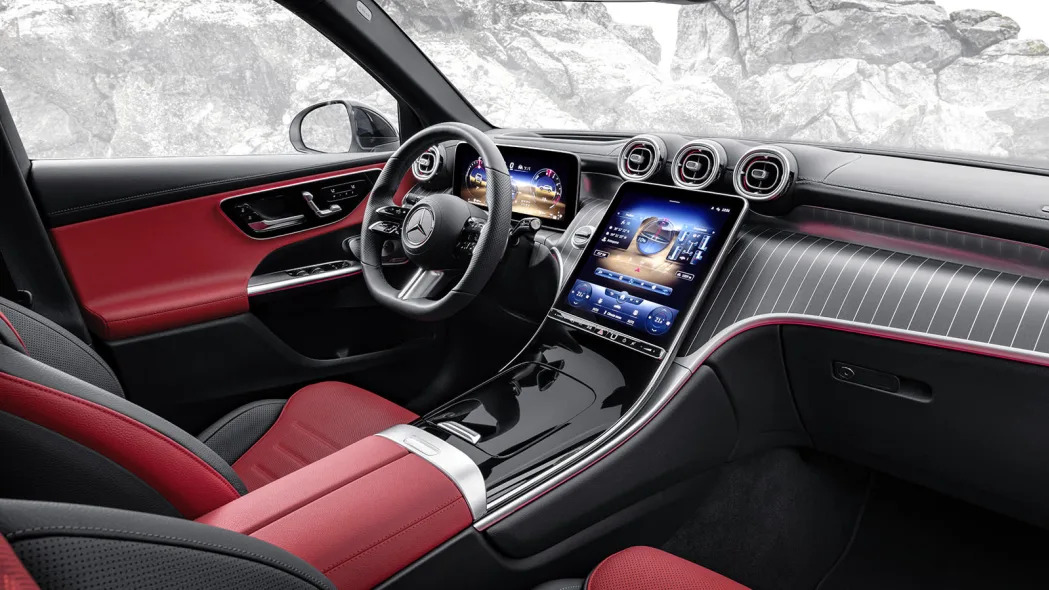
While not as quick, the new PHEV should go much farther on a charge thanks to its 24.8-kWh battery pack. That's 11.3 kWh more than the old battery, nearly doubling its capacity. On the WLTP loop (as U.S. EPA range and fuel economy haven't been announced), the GLC 350e has a seriously impressive range of 81 miles on electricity alone. That will likely be reduced on the EPA test cycle, but will undoubtedly be an improvement over the old model's 22 miles. Somewhere around 40 miles seems like a reasonable expectation. In addition to the added range, AC charging speeds have increased from 7.4 kW to 11, and now the GLC supports DC fast charging up to 60 kW.
The GLC 350e will be offered in three versions, the standard trim, Exclusive and Pinnacle. The standard features list is fairly extensive including a 12.3-inch instrument screen, 11.9-inch infotainment screen, navigation, wireless Apple CarPlay and Android Auto, wireless phone charging, heated seats, dual-zone automatic climate control, ambient lighting, parking sensors and power hatch. On the safety front it has automatic emergency braking, blind-spot warning and automatic lights.
The GLC 350e goes on sale in the second half of this year. Pricing will be announced closer to its on-sale date. It will certainly be priced above the roughly $50,000 of the base GLC 300 4MATIC.
Toyota C-HR PHEV review
Is it really necessary to have PHEV power in a Toyota C-HR? Jonathan Crouch decides.
Ten Second Review
Top versions of the second generation C-HR gain the PHEV powertrain Toyota thought unnecessary in this small coupe-crossover model's original predecessor. You could almost treat the resulting confection like a full-EV for commuting duties, but inevitably, there's a price to pay for the extra sophistication.
Background
Toyota's always seemed very undecided about PHEV technology. Having virtually invented it back in 2012 for a top version of the Prius, it took nearly another decade for the brand to offer it again on another model (the RAV4). Questions to the company as to why smaller Toyotas couldn't be had with Plug-in Hybrid tech were met with the response that the benefits of PHEV were "largely illusory" and that a better solution was to concentrate on conventional Hybrids.
But everyone's allowed to change their mind and Toyota clearly has in developing the second generation C-HR crossover we're looking at here, which now has a headlining PHEV model at the top of its line-up. Most sales will continue to be of the self-charging conventional Hybrid versions of this model, but let's take a closer look at whether plugging your C-HR in might be a credible option if you're planning to spend big on this model line.
Driving Experience
Most PHEVs actually aren't very efficient at all, once their EV range is used up. When that happens, they usually revert to a conventional petrol engine made even less efficient by the fact that it has to lug along the extra weight of a Plug-in Hybrid battery pack. The C-HR PHEV has that too, but at least its core petrol engine is a self-charging full-Hybrid, which makes it rather unique amongst models of this genre.
The 2.0-litre engine in question (borrowed from the faster of the two standard Hybrid models) is mated to a 161bhp electric motor powered by a 13.8kWh battery that, when fully charged, can offer an EV range of up to 41 miles. Only the front wheels are driven - with up to 220bhp, which allows 62mph to be dispatched in 7.3s en route to 112mph. To cope with the extra power (and weight), Toyota has added new twin-piston brakes and new ZF frequency-sensitive shock absorbers supposed to improve the ride over high-frequency bumps. There are three driving modes and you can alter the strength of regenerative braking right up to a 'B' setting that offers so much retardation off-throttle that you hardly ever need to use the brake pedal.
As with the ordinary Hybrid versions of this second generation C-HR, Toyota says it's worked on the handling, introducing a wider track and tweaking multi-link rear suspension elements from the larger RAV4. It all sits on the company's usual TNGA-C platform, borrowed from the Corolla. And Toyota says that it's improved auto gearbox response too, though you shouldn't expect too much there.
Design and Build
Apart from different badgework and an extra charging flap, there are no visual differences to set this PHEV model apart from more ordinary C-HR Hybrids. If you liked the edgily-styled first generation C-HR, it's likely that you'll also appreciate the visual efforts Toyota's made with its replacement. As before, dramatic lines, sharp bodywork creases and sculpted headlights catch the eye. Plus the nose gets Toyota's latest 'hammerhead face', there are flush-fitting pop-out door handles and pricier trim levels get two-tone paintwork. A new pre-coloured resin finish for the bumpers also gains gives a two-tone vibe. Contrary to expectations, this MK2 model is a little smaller than its predecessor, 35mm shorter and sitting 15mm lower. It's 45mm wider though and has bigger wheels - up to 20-inches in size.
The cabin features various recycled plastic fabrics, contrasting soft-touch surfaces and a pair of so-called 'sail panels' that stretch from the fascia top into the doors. A 12.3-inch digital dial display features for the instruments and the centre screen is also 12.3 inches in size. You sit quite high, but it's not enough to alleviate the rather compromised rearward visibility.
You access the rear through conventionally-sited door handles. And once inside, you'll be tight on legroom, though Toyota claims that extra space for heads has been freed up by the fact that the optional panoramic glass roof doesn't need a shade. Rear seat visibility is limited and the sloping roof line restricts ceiling space. The boot's restricted too: to extend it, the seat back splits 60:40.
Market and Model
Prices for the second generation C-HR model start from just over £31,000, but you'll be paying in the £42.000-£45,000 bracket for this PHEV version. The 'GR Sport' trim level many will want has 20-inch machined alloy wheels, a head-up display and a JBL premium audio system. Along with bi-tone exterior paintwork, front sports seats with suede-effect upholstery, ambient interior lighting, a panoramic roof and a 360-degree panoramic view monitor.
That's in addition to the usual very complete rosta of C-HR spec. You can tick off a powered tailgate, cloud-based navigation, a wireless smartphone charging mat, 'Apple CarPlay' and 'Android Auto' smartphone-mirroring and an auto-dimming rear view mirror. Plus there's rear privacy glass and a parking sensor system with automatic brake function. There are heated seats and you get a 12.3-inch instrument display, along with a 12.3-inch 'Toyota Smart Connect+' central infotainment screen.
The safety and assistance package includes the latest, third generation Toyota Safety Sense package, with functions including a Pre-Crash System, Adaptive Cruise Control, Lane Trace Assist, Road Sign Assist and Automatic High Beam. In addition, there is a Blind Spot Monitor which links to Safe Exit Assist to help prevent doors being opened into the path of vehicles approaching from the rear.
Cost of Ownership
For this PHEV C-HR variant, you're looking at up to 294mpg on the combined cycle and up to 19g/km, with an EV range of up to 41 miles; in the real world, it'd be more like 35 miles. That claimed range figure puts the car in a very favourable 8% Benefit-in-Kind taxation bracket - which for many customers could be the clincher for purchase. Helping with the range figure is the fact that this second generation design is around 2% more aerodynamically efficient than its predecessor.
On the move, you can select an EV mode or use a Hybrid setting that will work with the sat nav and uses Geofencing technology that will prioritise electric power in low-emission zones. The navigation system can also suggest a route that will take into account your state of charge and identify possible charging spots. In a C-HR PHEV, you can also adjust the strength of the regenerative braking.
The 13.8kWh battery can use a 7kW charger for a home top-up that will take two and a half hours. Whatever C-HR you decide upon, as usual with Toyotas these days, if you keep the car serviced at a franchised dealer, the warranty can be extended up to a maximum of 10 years.
Summary
For a few people, this Plug-in Hybrid C-HR will be the ideal small coupe-crossover confection. Hybrid power when you need an engine. And you can treat the car like a full EV when you don't. What's not to like? Well the added weight for one thing. And the significant price premium for PHEV power for another. So you'll either be a sceptic or a convert when it comes to this model.
But then the C-HR has always garnered that kind of reaction, so why should this second generation model's more sophisticated high-tech flagship variant be any different? In a world undecided about the future of EVs, it might just be an ideal fashionable small runabout for those who don't mind a premium price tag. And then again, it might not. Everyone will have their own opinion, just as they always have with the C-HR.
Source: rac.co.uk
Fiat 600e review - What’s it like inside? What’s it like to drive? Range, charging and efficiency.
Pros & cons
PROS
Proven Stellantis running gear
Attractive pricing
Comfortable ride
CONS
Rear legroom is tight
Boot space isn’t fantastic
Steering is overly assisted
Fiat 600e Overview
Although the electric car market is already rammed full of SUVs, the Fiat 600e adds another contender to the list. It’s a dinky thing, although it should be just about big enough for family duties, with a hybrid version on the way for usefully less money.
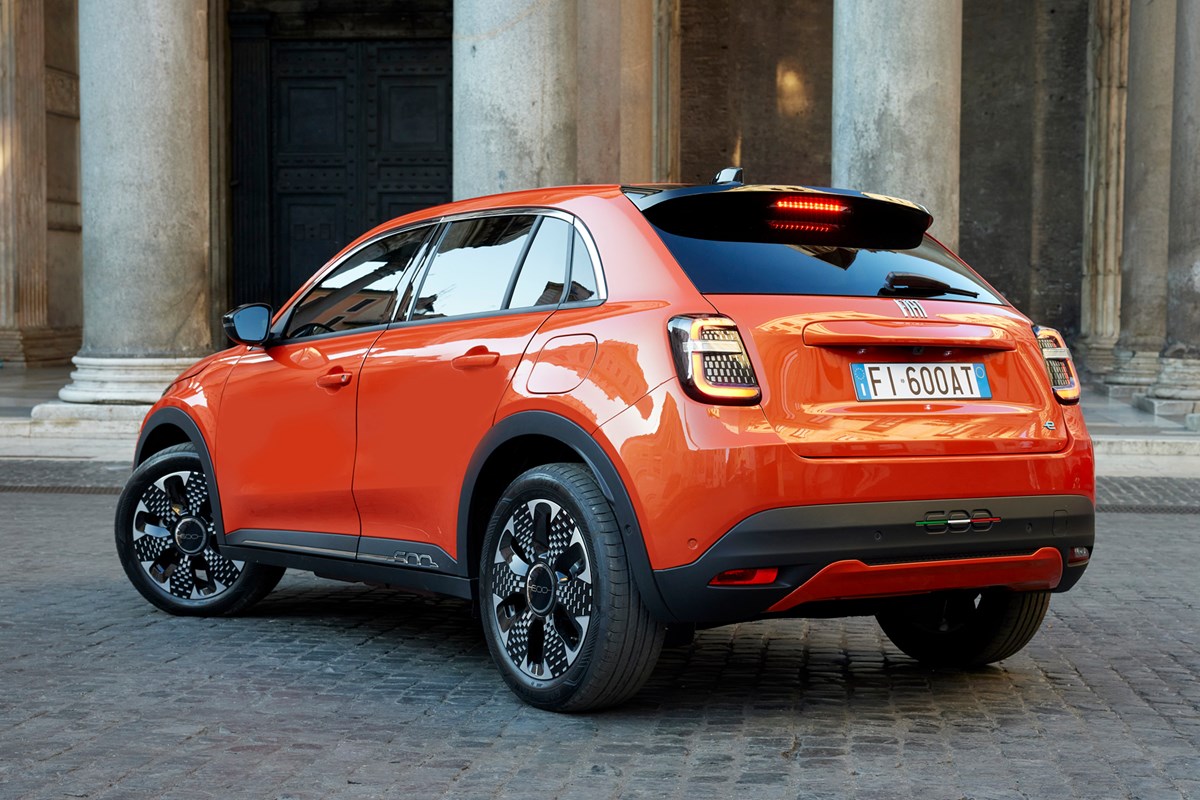
Fiat’s plan for the 600e was to take the appeal of Fiat 500e city car and upscale it to a more practical package. The firm made its task as easy as possible by pinching the 600e’s platform, motor, battery pack and interior technology from the Stellantis parts bin. As such, it has much in common with the new Jeep Avenger, not to mention the DS 3, Peugeot e-2008 and Vauxhall Mokka,
Using existing components isn’t such a bad thing, though. Competition in the compact electric SUV segment is fierce right now – and that means buyers simply aren’t prepared to tolerate poor quality or iffy reliability. The trouble is that the components Fiat used to build the 600e have, until this point, only delivered average results. None of the Stellantis electric SUVs are particularly inspiring to drive and they all offer decidedly average range figures, which means this little Fiat has its work cut out if it’s aiming for the top of the class.
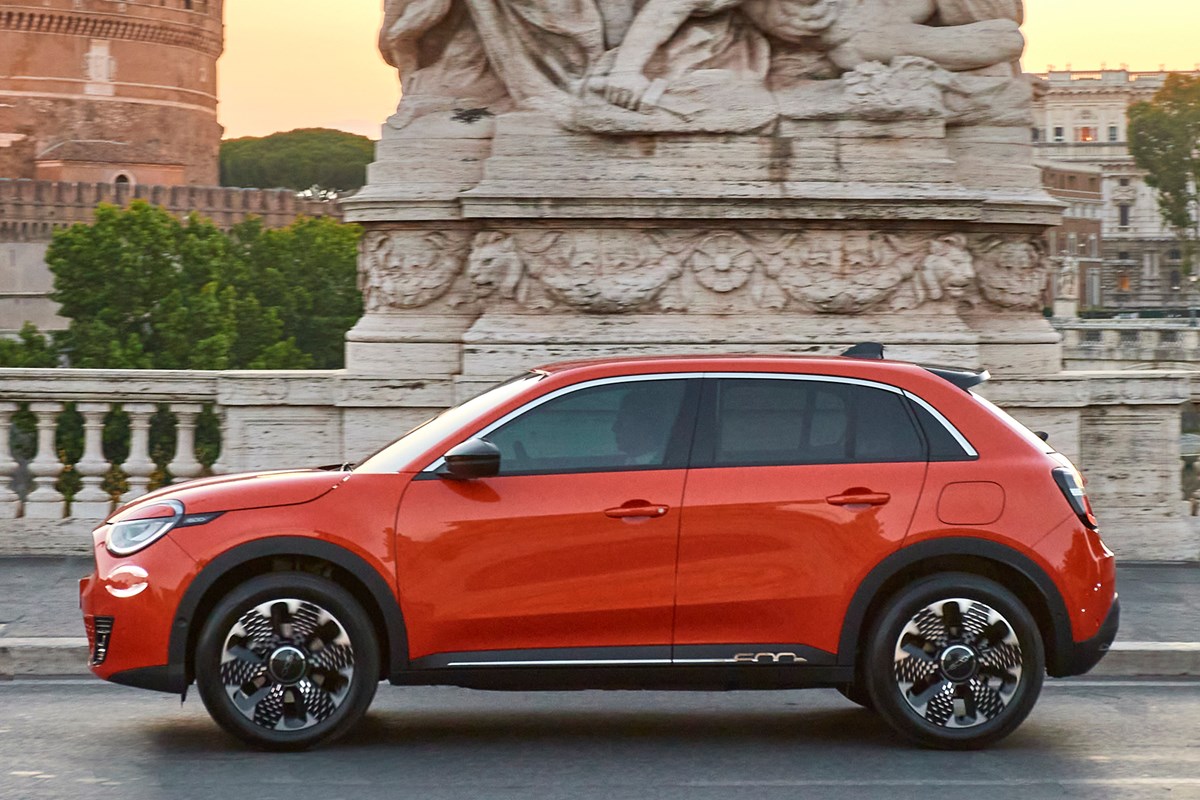
What’s more worrying for Fiat is that, if the 600e doesn’t deliver, drivers will simply shop for one of its many rivals. Key competitors include the Kia Niro EV, the new Hyundai Kona Electric and the equally funky Smart #1. At least the 600e has price on its side, undercutting most rivals even before you’ve factored in a chunky grant from Fiat.
What’s it like inside?
It’s a lot like the Jeep Avenger. The 600e’s centre console, 10.25-inch infotainment system and digital gauge cluster are all identical to the Jeep’s. Fiat has tried to distance its car from its closest sibling, though, by fitting it with a daintier dashboard panel and a curvier instrument binnacle, both of which it says are nods to the original Fiat 500.
It’s certainly an attractive setup, especially when teamed with the cream upholstery offered on the range-topping La Prima model. Practicality is hit and miss but, to be fair to Fiat, we’ll start with the good bits.
Fiat says the 600e’s various cubbies and door bins amount to an extra 15 litres of storage space, which means it should be easy to keep the cabin looking tidy. We’re especially fond of the storage bin between the two front seats. That iPad-style magnetic flap hides a cubby large enough to lose your arm in – and it even features a wireless smartphone charger. There’s plenty of room for people, too, with good headroom and a driver’s seat that goes a long way back.
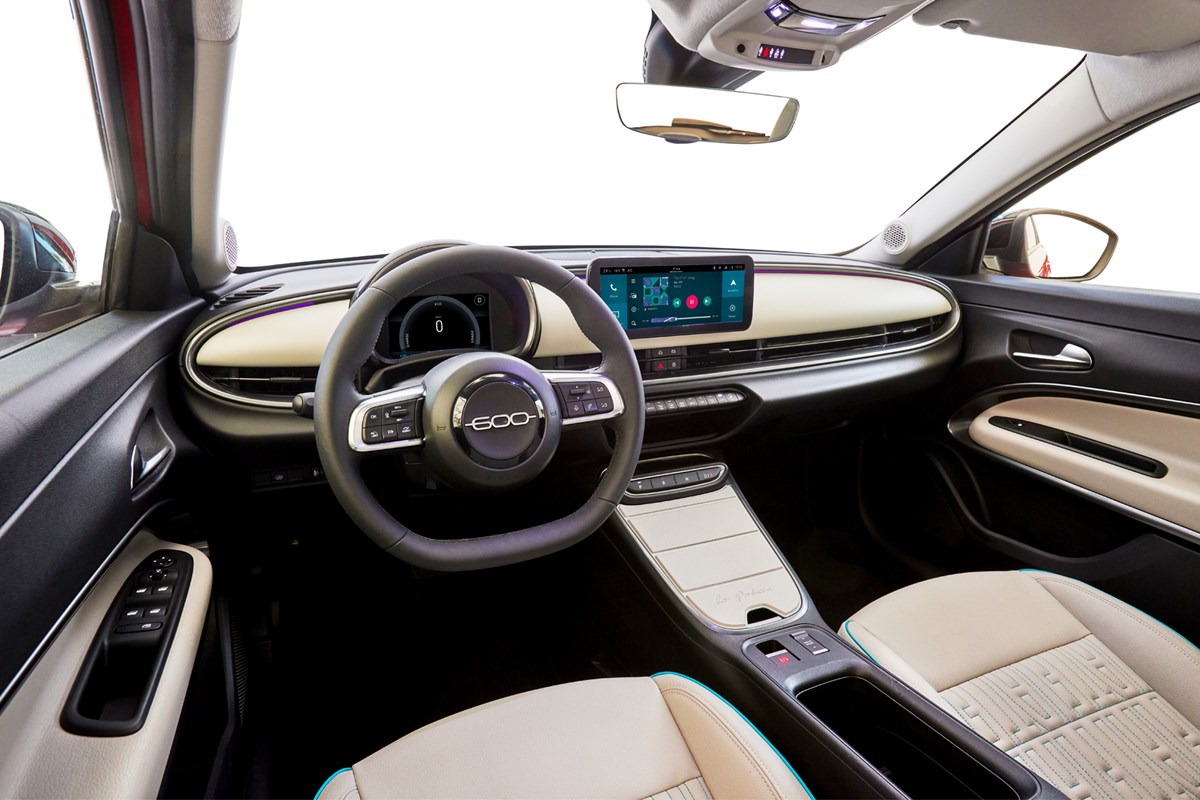
Space in the back is less impressive. If you’re a tall passenger behind even an average-height driver, your knees will press far enough into the front backrest to function as their lumbar support. It’s fine for kids and short families, but we’d point you towards the Smart #1 if rear space is important.
Boot space isn’t fantastic, either. At 360 litres, its a whopping 115 litres smaller than the Kia Niro EV and 110 litres smaller than the bargain-basement MG ZS EV. However, if you fold the rear seats flat, the Fiat 600e’s boot space expands to a perfectly respectable 1,231 litres.
Quality is reasonable overall, although you can see where Fiat has cut some corners. The dashboard and centre console storage tray lid feel high quality, but the plastic used on the centre console and door cards feels like it was pulled from a supermini. This is to be expected given then (relatively) affordable price.
Fiat has also very obviously raided the Peugeot/Citroen parts bin for switchgear – and it hasn’t done a convincing job of integrating the parts into the 600e’s cabin. The drive mode and electronic parking brake switches on the centre console, for example, look like complete afterthoughts.
What’s it like to drive?
Again, it’s a lot like the Jeep Avenger only softer. But that’s to be expected given the mechanical similarities between the two cars. The 600e’s wheelbase (the distance between the front and rear axles) is identical to the Avenger’s, and the suspension is identical save for some slightly different tuning.

Despite this, the 600e is noticeably softer than the Avenger which we think is a good thing. While you certainly hear the suspension working away, it does a good job of smoothing off ruts and bumps. You do feel it bobble around a little on broken surfaces, yet it never feels floaty or uncontrolled. At this price point, it’s one of the comfier small SUVs out there.
It’s reasonably refined, too. Wind noise is kept in check well (thanks in part to the car’s aerodynamic egg-shaped body) and road noise isn’t too intrusive. Wide expansion joins and deep craters will send a judder through the cabin, but the impact felt through your backside is less severe than you get in an Avenger. Or a Cupra Born, for that matter.
There is a trade-off for this comfort, though. Body roll. The 600e really leans over in the corners if you attack them enthusiastically. Push it into a corner especially hard and the stability control system will come down on you like a tonne of bricks, snatching at the brakes to extinguish your fun. While no small electric SUV is a laugh-a-minute, the Smart #3 feels that bit keener.
The steering really doesn’t inspire confidence. There’s very little feedback and its weight doesn’t build in line with your speed which can make it tricky to judge how much lock to apply when cornering on faster roads. You do key into it eventually, while Sport mode adds a little weight if no more feedback.
At least the electric motor is a proven unit. It’s the same 156hp electric motor found in the Jeep Avenger and the updated Vauxhall Corsa Electric – and it’s perfectly adequate. Fiat says it allows the 600e to sprint from 0–62mph in nine seconds flat before reaching a top speed of 93mph.
Rivals such as the Kia Niro EV and Hyundai Kona Electric are noticeably faster in a straight line. The fastest Kona, for example, has 218hp and it can get from 0–62mph in 7.8 seconds, so it feels much spryer. Still, the 600e has more than enough poke to carve up your average petrol-powered hatch at the lights.
Like most EVs, Performance tails off as you build speed, but it has just enough power left in the tank to consider an overtake approaching the national speed limit. You can also control the response and performance of the electric motor by cycling through the car’s drive modes. The motor’s maximum output is limited in Eco and Normal modes to conserve battery power – but in Sport mode you get the full 156hp.
Thankfully, and unlike some EVs, you can access all 156hp in any mode by planting your foot flat to the floor, pushing down past the kickdown switch. That’s handy if you’ve got an eye on range but suddenly need an additional uplift in performance.
Range, charging and efficiency
The 600e is based on the same e-CMP2 architecture found under most Stellantis small electric cars, but it’s powered by the company’s new 54kWh battery pack. The Italians reckon that’s enough to give the 600e a maximum range of 250 miles with a mixture of motorway and city driving, or up to 375 miles if you’re just dithering around town.
37Fiat 600e charging socket, orange paintThe top-spec La Prima model gets 100kW DC rapid charging.
Like its siblings, the 600e will struggle to achieve its maximum range in the real world. We couldn’t get anywhere near the 5.0 miles per kWh efficiency you’d need to hit 250 miles, with the real range sitting around the 200 mile mark.
There’s one crumb of comfort, though. The 600e charges much more quickly than the older Stellantis EVs based on the previous version of the e-CMP architecture thanks to 100kW DC rapid charging. As such, its battery can charge from 20 to 80% capacity in less than half an hour. Slower 11kW AC charging is also supported – and that can fully recharge the car’s cells in around six hours.
What else should I know?
Fiat has decided it won’t sell the 600e (or any of its new cars for that matter) with grey paint. That’s a bold move, especially when you consider that grey is currently the most popular colour for new cars in the UK. But Fiat reckons UK buyers are wrong and the colour grey is boring. From now on, it’ll only allow its customers to choose from a range of bright colours. You can read more about Fiat’s new paint palette on our sister site, CAR magazine.
37Fiat 600e infotainmentInfotainment is reasonably easy to navigate, but not the snappiest to respond.
There are just two specifications to choose from. The most basic (RED) model is priced from £32,995 which, most importantly, undercuts the cheapest Jeep Avenger by around £2,700. The (RED) specification continues Fiat’s long-lived partnership with the international charity of the same name. It comes with a reasonable amount of standard equipment, including LED headlights, rear parking sensors, keyless go, cruise control and traffic sign recognition. You also get the 7.0-inch digital instrument cluster and 10.25-inch infotainment system with wireless Apple CarPlay and Android Auto. But it still has steel wheels, strangely.
The flagship La Prima model is a bit pricier at £36,995. You do get a lot more equipment for your money, though. Upgrades includes an electrically adjustable and massaging driver’s seat, a wireless smartphone charger, a rear-view camera and cream leather upholstery (with a rather natty embroidered Fiat motif). Both front seats also have heating elements and there are a few more charging ports dotted around the cabin. Most importantly, the upgrade unlocks 100kW DC charging.
Crucially, Fiat are promising to continue their £3,000 ‘e-grant’ all the way through 2024. When you factor in a starting price of of less than £30k, the 600e suddenly becomes a lot more tempting. Click through to our verdict page to learn whether the Fiat 600e is worth waiting for, or whether you should opt for one of its rivals instead.
Fiat 600e verdict
Should you buy one?
The Fiat 600e is a difficult car to recommend because it doesn’t deliver on its goals as an electric family car. The rear seats are just too cramped and there are plenty of rivals on the market that offer more space in the boot and longer electric ranges, such as the Hyundai Kona Electric.
Despite this, we think the Fiat 600e is the best small electric SUV Stellantis has built so far. It’s the only one that rides properly and, with its bright paint finishes, cutesy smiling face and quirky cabin, it’s genuinely desirable. You’ll certainly stand out from the crowd – and its starting price of £32,995 before discounts looks rather enticing alongside the £37,295 you’ll spend on the most basic Kia Niro EV or the £35,950 required for the entry-level Smart #1.
But there’s a caveat to our praise. The 600e is the high watermark in a crashing sea of mediocrity from Stellantis. If you look outside the group, you’ll find plenty of objectively better small electric SUVs that we think you should consider first, such as those mentioned above. So, while the Kia and the Smart might be more expensive, the former offers more space inside while the latter is much more fun to drive.
What we like
A comfortable ride is welcome on Britain’s battered roads, and equipment levels are good. It’s also more affordable than most of its rivals.
What we don’t like
The real world range isn’t great, the rear seats cramped, and the boot is smaller than most rivals’.
Source: parkers.co.uk
2024 Mercedes-Benz E 400 e 4MATIC Lives Up To The Hype In PHEV
With a lineage that traces back decades, the Mercedes-Benz E-Class stands as a testament to elegance and cutting-edge engineering. It also happens to be one of my favorite cars in the world, so this review won’t be biased at all. Just kidding. It’s precisely because I know the E-Class so well, that I’m not going to pull any punches when it comes to this all-new W214 model.
I’ve reviewed all E-Class generations from the W210 onwards (the one that came out in 1994), and then my dad’s old W123 was one of the cars he would let me drive in non-traffic areas and secluded backroads as a kid. This is one of those vehicles where you’ll always know what to expect, and you’ll likely never be disappointed by what you get.
You could get into a W211 today and still feel like you’re in a proper premium sedan – as long as it’s been well-maintained. Same goes for the W212, those things make for terrific used purchases, although I tend to favor the pre-facelift version as far as styling is concerned. Put an AMG pack on it and it’s going to look like a million bucks.
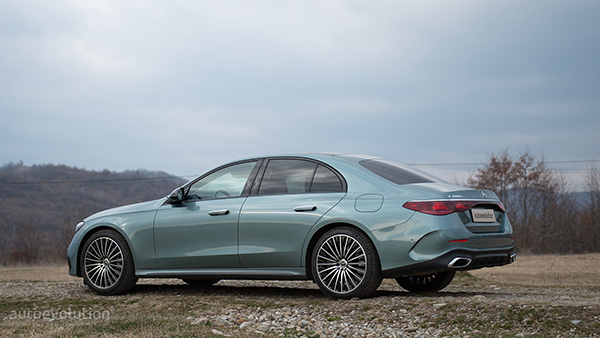
I feel the same way about the W213, surprisingly. I think the pre-facelift version looks better, although looks were never an issue with the previous-gen E-Class. Rather, some people pointed out various cost-cutting measures undertaken by Mercedes, resulting in an interior that didn’t feel as plush as expected.
It’s true, some of the plastics used in the W213 were a bit of a letdown, but only if you’re nitpicking to some extent. Still, the same issue persists on this all-new W214 model, although the interior as a whole looks absolutely amazing. The visuals and overall ambiance are both terrific, but more on that later.
Design Evaluation
The E-Class has always had this commanding presence about it. Sort of an understated luxury. It doesn’t beg for attention, but you’ll notice it when it’s there.
Mercedes unveiled the all-new W214 in April of last year, using the rear-wheel drive based MRA II platform as its underpinnings. It’s grown compared to its predecessor – it’s longer by about 1.0 in (25 mm), wider by 1.1 in (28 mm) and just a tiny bit taller (by less than an inch). The wheelbase is longer too, but you’re not going to notice it in terms of passenger comfort.
The plug-in hybrid variants sit even closer to the road than their mild hybrid counterparts (by 0.59 inches / 15 mm), although to tell you the truth, I didn’t even notice.
From a 90-degree side angle, the W214 is instantly recognizable as an E-Class. It sort of looks like a smaller S-Class, which is nothing else but a compliment. The front fascia? It’s got this high gloss black insert between the headlights and the grille and personally I’m not a big fan of this look. It’s very EQ-ish. I also don’t think the headlights are as nice as the ones on the old W213.
The light signature has these “eyebrows” that make the W214 look maybe a bit too pretty? Don’t get me wrong, pretty is good on most cars, but in this case, it doesn’t really fit the personality of the E-Class. I think the AMG Line spec non-facelifted W213 has the best front fascia design of any E-Class, followed by a similarly specified non-facelifted W212. The W214 wouldn’t even make my Top 3 as far as front-end styling is concerned.
The rear, on the other hand, is less polarizing, albeit still a bit too EQ-ish. Yes, I’m not a big fan of Mercedes’ EQ-brand models. Get over it. I do like the three-pointed star motif taillight signature, so there’s that.
Sticking with what I really liked, the pop-out door handles are somewhat cool, and then there’s the color on our test car – it’s Mercedes’ so-called Verde Silver, which we ranked second in our 10 Best New Car Colors of 2023 feature story. Initially, I thought that the color would look more “silver” from certain angles (like it did in some media images), but in real life the green hue shines through predominantly.
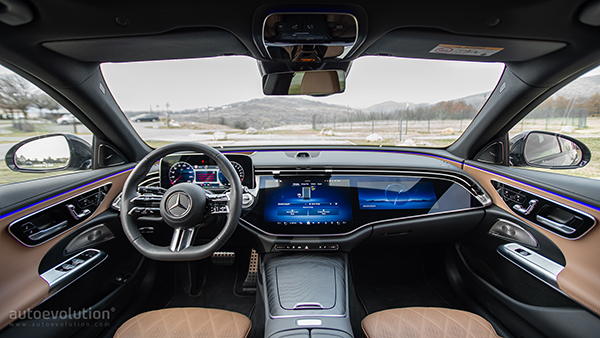
Other exterior features worth highlighting include the AMG Line spec with the AMG Styling package, Night Package, the 20-inch multi-spoke AMG wheels, Digital Light function, panoramic sunroof, and the illuminated radiator grille. That last one is a bit of a gimmick, but whatever.
Overall, I think Mercedes did a solid job with the design of the all-new E-Class. The front end could have been a lot better, but I’m not going to complain too much. I like that they played it somewhat safely and didn’t turn the W214 into an EQE twin, styling-wise.
Interior Assessment
The W214 is actually Mercedes’ first non-EQ product fitted with the MBUX Superscreen, featuring a three-display setup pairing two 12.3-inch screens with a larger one in the middle (not sure about the exact size, but it doesn’t look as big as the Hyperscreen’s 17.7-inch middle display).
The so-called Superscreen also comes with a selfie camera, and you’ve got tons of customization available, especially for the Active Ambient Lighting (64 available colors) which can even keep up with the beat of whatever song you’re listening too – that tends to get old really fast though, and you end up just going with a basic setting, like a single color or a dual-color setup that doesn’t constantly blink in your face.
Ambient lighting aside, the overall design of the dashboard is impressive too. It’s got that wraparound feel to it, like you’re inside a luxury boat. Is it better than the interior design on the W213? I couldn’t tell you. I think they both look equally good. The two models even share nearly identical steering wheels.
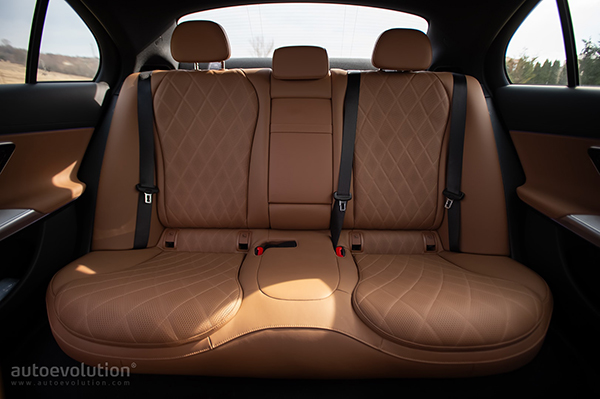
I guess the presence of the Superscreen points to a more modern environment, but not everyone loves giant screens. If you’re over 40, you’re probably already sick and tired of a lot of the tech we’re being bombarded with, especially since some of this stuff tends to be overly complicated, as opposed to just pushing a physical button for a simple function.
In terms of build quality, it’s pretty darn good overall, but there are certain cheap(er) plastic bits right where you wouldn’t expect them. Like the turn indicator or the column shifter – both feel like they’ve been taken off some… non-premium product. Let’s just leave it at that.
Another thing I didn’t like – how fingerprint prone those screens were. Ridiculous. You need to constantly drive around with a cloth in the car just to wipe that stuff down.
Meanwhile, the comfort is excellent, although the seats weren’t as comfortable as they looked. They were surprisingly hard. I’m currently driving the all-new G60 BMW 5 Series, and its seats are infinitely more comfortable than the ones in the W214 E-Class. I’m just as surprised as you. But maybe I’m just old.
Then there’s the on-board tech. This car came loaded with just about every possible driving assistant system, to go with the MBUX Premium system, the Energizing Package, a Head-up display, 3D driver’s display (thankfully you can turn that off), Burmester 4D sound system, the previously mentioned active ambient lighting tech, Keyless Go, 360 cameras, Parktronic, and the ventilated seats with memory function.
Speaking of the seats, they were upholstered in Tonka brown Nappa leather and definitely looked the part. I just wish they were a little more plush.
As for how much space there is for backseat passengers, I’d say that it’s adequate for this type of car, no complaints. You’ll still have sufficient knee and legroom even if you’re over 6’0” tall. But if you’re worried about the kids having enough room, and you need room for strollers and everything, you already know you need an SUV and not a four-door sedan.
Before I forget, props to Mercedes for figuring out some people might unwillingly leave their phones in the car, since the wireless charging pad has a cover that you can open and close. Worry not though, because if your phone is still charging when you shut off the engine and open the door, the MBUX system will warn you via the speakers saying: “Just a moment. Your phone is still in the car.” Brilliant.
Driving Take
Powertrain characteristics aside, the W214 E-Class drives exceptionally well. It glides around just like a Benz is supposed to glide, but it also feels supremely planted. The steering feel is particularly impressive. It’s even better than in the G60 5er – but you’ll have to wait a little while longer until we publish that story.
The Airmatic suspension soaks up bumps and imperfections with ease, and it wouldn’t be overstating it to say that the W214 E-Class is no. 1 in its segment in terms of driving comfort, which is what matters most to some people. Not everyone cares how quickly you can go around a corner in a mid-size family sedan – and if they do care about that extra 0.1 seconds like they’re on some freaking quick lap at Spa, you can pretty much go ahead and discard their opinion.
Another amazing characteristic is the turning circle. Courtesy of its rear axle steering system, the new E-Class will turn its rear wheels opposite the ones at the front at a 4.5-degree angle up to nearly 40 mph (64 kph). Then, the rear wheels turn with the front wheels at a 2.5-degree angle. What’s cool is that you can perform a 180-turn in this 16.2-foot-long (2.96 m) sedan with greater ease than you would in a Corolla.
Overall, the W214 has one of the best steering feels/characteristics I’ve ever experienced in this segment, and this goes for both low-speed and high-speed maneuvering. Rest assured; it just eats up the miles as soon as you get on the highway.
When you do want to go quicker in the E 400 e 4Matic, you most definitely can – and to a rather impressive degree. This specification is powered by a plug-in hybrid system comprised of a turbocharged 2.0-liter four-cylinder engine and a 95-kW electric motor working alongside a 25.4 kWh battery. Altogether, you’re putting down 375 horsepower (381 ps) and 480 lb-ft (650 Nm) of torque, which in turn should get you to 60 mph in about 5.2 seconds with the help of a 9-speed automatic gearbox (which happens to be excellent). This is definitely quick enough, especially for a car that weighs 2.2 tons (nearly 5,000 lbs).
Meanwhile, the electric motor alone produces 127 hp (129 ps), and it’ll take you all the way to 87 mph (140 kph) without having to engage the internal combustion engine. It’s not particularly quick, but it’s comparable to certain low-budget European EVs in terms of 0-60 times.
On a more personal level, I can’t tell you that all plug-in hybrid systems are automatically great, because a car’s electronic brain will constantly be adjusting things like regenerative braking and throttle input, which in turn can make the vehicle feel a bit inconsistent in how it drives.
I did experience some of this in the E 400 e. Sometimes it would coast, other times it would “engine brake” out of nowhere, so make sure you set things up just right before you hit the road. You can choose between four regen brake settings (from coasting to “almost” full-on one pedal driving).
Everyday Living
The EV range on this car is rated at 69 miles (111 km). In other words, for a plug-in hybrid running under electric power only, this gets a big thumbs up.
In terms of fuel economy, Mercedes claims a combined 261 mpg (WLTP), but that’s with the electric motor combined. I think it would be tough to get anywhere near that in day-to-day conditions (you’d need the battery fully charged and you’d have to drive efficiently), plus, PHEVs have long been suspected of being nowhere near as efficient in real-world use, so take everything with a grain of salt.
As for a more conventional figure for the combustion engine, I think you can get it to about 30 mpg (7.5L/100 km), no problem. Oh, and before I forget, you can’t fast-charge the battery on this thing, but on the plus side, PHEV owners don’t usually suffer from any range and/or recharge anxiety. Still, the best you can hope for is about 20 min for a 0-80% charge, but it really depends on where you charge it. It can also take a couple of hours.
Moving on to something a little different, but still practicality-related, we need to talk about trunk volume, which leaves a lot to be desired in the E 400 e. All you get is 13 cu.ft of cargo space, about 370 liters. Meanwhile, a non-plug-in hybrid variant will offer you 19 cu.ft (540 liters). It shows how some PHEVs just aren’t as practical as pure gasoline or diesel-powered models.
Finally, we arrive at the price. Our test car kicks off from €69,781, but with nearly €19,000’s worth of options, the final price stood at €110,166, taxes included. That’s roughly $120,000.
What does this mean for U.S. buyers? Well, the 2024 E-Class is just now going on sale in the States, where you’ll be able to buy it in E 350 and E 450 specifications, for starters. The E 450 isn’t exactly the equivalent of our E 400 e tester, but it comes close in terms of performance.
Powered by a turbocharged 3.0-liter inline-six engine, the E 450 Matic produces 375 horsepower in exchange for $69,250. The E 400 e might cross the Atlantic too, but as of right now, we don’t know anything about any potential MSRP.
Test Drive Roundup
There aren’t a lot of negative things you can say about the all-new E-Class. Sure, maybe the front-end styling isn’t perfect, but if you nail the specification, you’ll be thrilled to own such a car long-term. It’s also clearly an upgrade over the W213 in terms of on-board tech. One might say that today’s E-Class is closer to the S-Class than ever before.
Bottom line: amazing ride quality, amazing tech, both relaxing and engaging to drive – what more can you ask from a mid-size premium sedan?
Pros
– Comfort
– Tech
– Overall design
– Driving Dynamics
Cons
– Lackluster front-end styling
– Limited trunk space in PHEV form
Source: mercedes-world.com
The battery for the old model is more expensive than the newest car
There is a widespread belief that electric cars are not cheap, but this case gives a completely new dimension to that claim.
The owner of a BMW i3 from Seattle was shocked when he saw how much it cost to replace the battery in his car - a local service estimated this job at $71,208.
This not only costs more than the entire i3, but it is also more expensive than the newest model, meaning it is more worthwhile for this man to buy a new BMW i5 eDrive 40.
Born from a legal loophole: Special Tesla Model Y only in this country PHOTO It turned out, after this case was revealed on the social network Reddit, that other owners of i3 models had similar cases, although not as extreme. One user wrote that they were asked for $30,000 to replace the battery.
Commenters mostly wrote that there is a "hidden agenda" behind such a service procedure, meaning that the service's goal is not really to repair the car but rather to force the owner to buy a new car, hence the absurdly high price.
Incidentally, one battery module for a BMW i3 costs between $3,000 and $3,500, while the battery has eight cells, so it's obvious that the $71,000 repair cost is inflated. Why - only the service providers know.

